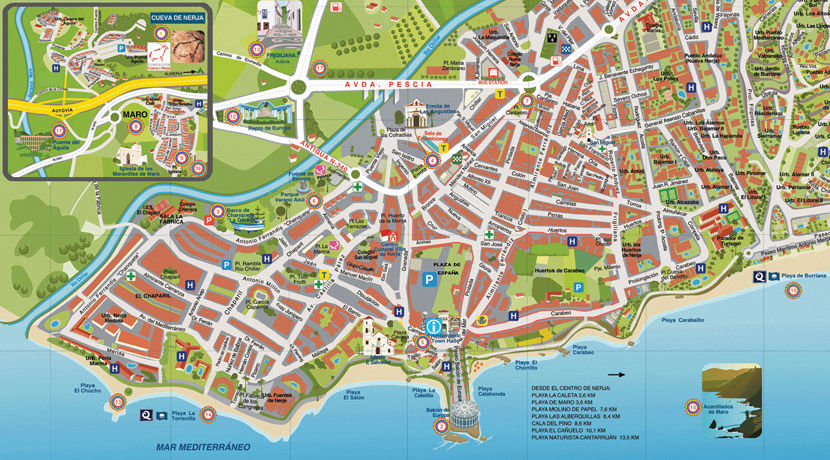

Click here to increase size
Introduction
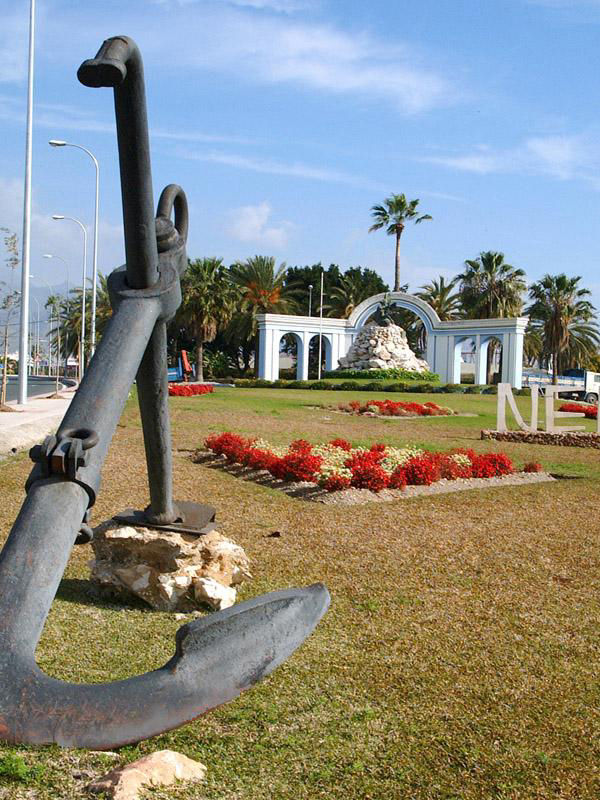
A place still exists on the Costa del Sol which lies between small coves untouched by development and surrounded by an impressive mountain scenery. At the easterly end of the province, only 50kms. From Málaga and within 1 ½ hours drive of Granada, you will find Nerja, the touristic capital of the Axarquia. With its mild climate, you can enjoy yourself to the full all year round and take advantage of the relaxed way of life of a village that still retains much of the character of its moorish past.
Today, Nerja offers an excellent range of quality accommodation and leisure time facilities. There are thirtieen Kms. of beaches, including the internationally famous Burriana beach that has once again been awarded by the Blue Flag of the European Union and the small coves below the impressive cliffs of Maro, which have been the inspiration of numerous artists who have set up residence here.
Lovers of the nature can enjoy the wonderful countryside in the area, camping at the campsite or in the camping zone in the parkland. For those who seek arternative activities on their holidays, there is fishing, diving, waterskiing, canoeing, water bikes, hiking, cycling, horseriding, jeep safaris, paragliding and much mores... with authorized services from full guarantee.
The historic centre, than begins in the Balcón de Europa (Balcony of Europe), was constructed around 1487. Former 9th Century Castle, it is now a viewing point above the sea. To the side of the Balcón, you will find the 17th Century El Salvador Church, constructed in baroque-mudejar style. You may also visit the 16th Century Nuestra Señora de las Angustias Hermitage with its paintings by the master Alonso Cano. In the old quarter of town, typical small shops offer local craftworks and products of the area, including the sweet wine and olive oil, honey and tropical fruits. At the beach and fish restaurants you can enjoy the “pescaito frito” (fried fish), whilst the many international restaurants in town offer a wide variety of menus to suit all tastes.
Nerja retains its traditional festivals: the Fair, Holy Week (Easter), the San Isidro pilgrimage and the festivals of San Juan and Día del Carmen are also celebrated in their own special way. There are a wide range of cultural events throughout the year. Of particular note is the acclaimed “Nerja Caves Festival”, wich takes place amongst stalactites and stalagmites, wich were formed over millions of years. The Nerja Caves are currently the 3rd most visited monument in the whole of Spain. You will be able to discover all these spots listening to the audioguide.
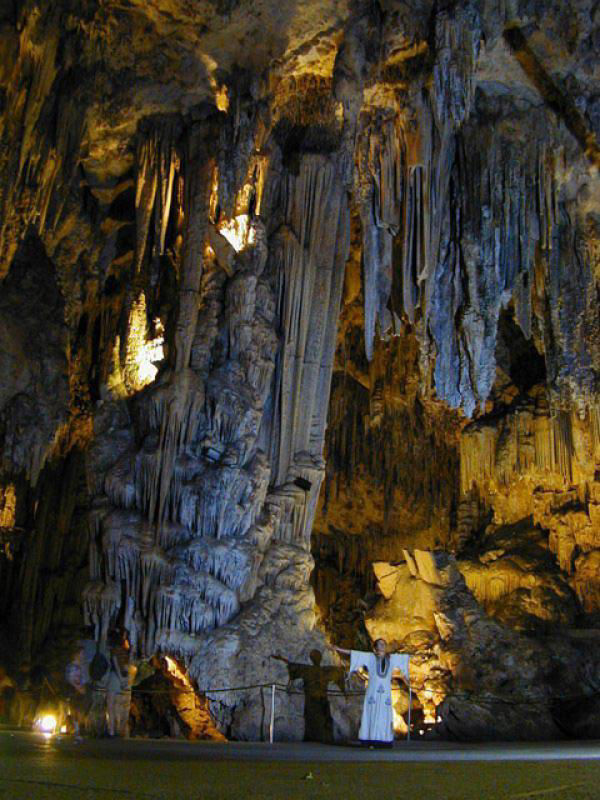
1- Nerja´s Cave
The Cave of Nerja is a natural archaeological formation originating from a type of calcified rock, known as Karst type rock, and which is home to a certain area where the rock rises up to form the thickest example in the world of a structure formed by the fusion of a stalactite and stalagmite, as certified by the Guinness Book of Records, 1989. The cavity is an example of archaeological stratification which spans a period from 25,000 to 3,600 years ago, that bear witness to the passage of our hunter-gatherer ancestors and of their fisherman counterparts.
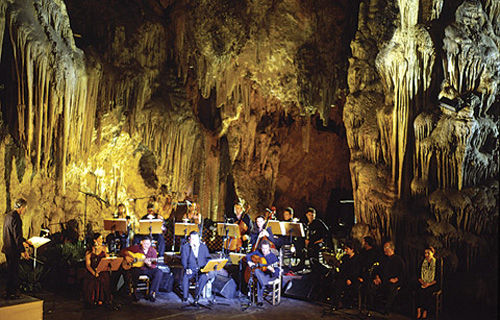
The cave in Nerja was used as an abode, a burial place and as a centre point for cultural rituals. The cave paintings found on the site make use of a range of coloured pigments ranging from red to black. Amongst the animals depicted we can find horses, deer, goats, birds…
The cave is the site chosen for the “Nerja Cave, International Festival of Music and Dance” which takes places during the second fortnight of July. The cave is open all year round apart from the 1st January and the 15th May and you can visit it with the audioguide.
2- The Balcony of Europe
The Balcony of Europe is to be found on the top of the cliff which separates the beaches of Salón and Calahonda, where once was sited the “Castillo Bajo de Nerja”, the lower of the castles to be found in Nerja, constructed at the beginning of the 16th Century. This castle underwent renovation the 18th century, during which a cannon battery was incorporated into the structure.
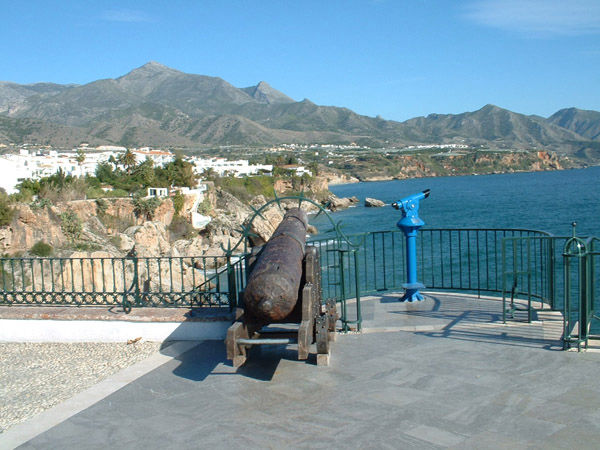
During the War of Independence the English completely destroyed the castle, along with that of La Torrecilla.
King Alfonso XII visited Nerja on the 20th January 1885 to inspect the damage caused by an earthquake in December of the previous year, praising the beaty of the town and exclaiming that he found himself to be inspired by the stunning views obtained from the vantage point of “Europe's Balcony”. A statue has been erected recently to commemorate the visit by Alfonso XII, depicting the king leaning against a balustrade which looks out upon the Mediterranean sea. Cast in bronze, the statue is the work of the sculptor Francisco Martín. Whilst in the gardens with the audioguide we find a monument that records the discovery of the Cave of Nerja.
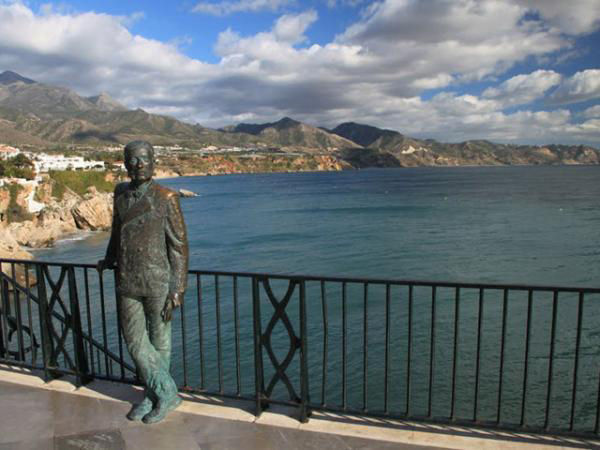
The urban layout of the front has been changed on numerous occasions throughout the 20th and 21st century.
3- The Chanquete boat LA DORADA
The boat named “La Dorada” (a play on words meaning both golden, or bream) used to fish for transparent goby fish, is perhaps the symbol most readily identified with the tourist trade in Nerja. It was the focal point of the “happy song” which the producer Antonio Mercero realised in Nerja at the beginning of the 1980s, broadcast on the Spanish television series “Verano Azul” (Blue summer).
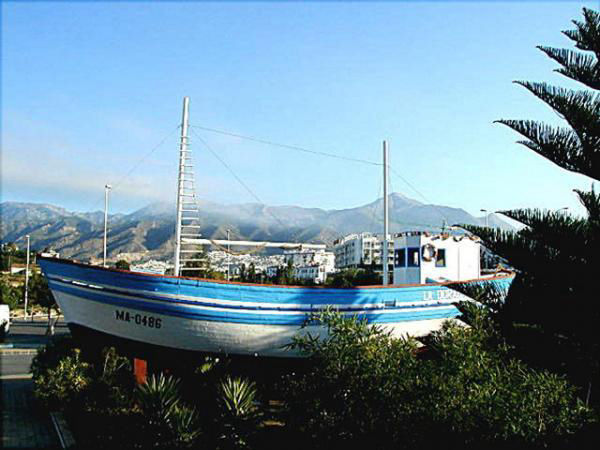
The first “La Dorada” as shown in the television series, served during the filming in 1981 as refuge and abode for the old seadog “Chanquete”, played tremendously by the actor Antonio Ferrándis. A year later the actor filmed “Volver a Empezar”, the first Spanish production to be awarded an Oscar by Hollywood in the category of “Best Foreign Language Film”.
4- The Chapel of Our Lady of the Distressed
Next stop of this audioguide, the chapel of Our Lady of the Distressed, constructed in the Baroque style, was constructed in 1720 by Bernarda María Alférez, a member of the López de Alcántara family, originally from Granada and owner of the sugar refinery “San Antonio Abad”. She used the profits from the sugar refinery to fund the construction of the building and its subsequent maintenance.
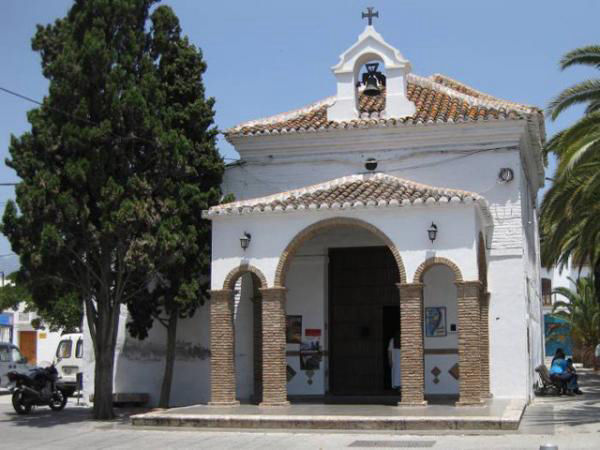
The patrons of this small sanctuary were the López de Alcántara family during the 18th and some of the 19th century, up until 1853 when responsibility for the chapel passed to Nerja's town council.
The structure is comprised of masonry and brickwork, with a nave over which spans a vaulted ceiling with a half-seam and small windows and the main chapel with a hemispherical vaulted ceiling above a shell type motif. The dome features magnificent oil paintings representing the Pentecost, whilst in the shells one can see pictures of the four Evangelists, and on the capitals and the triumphal arch pictures of the cardinal and theological virtues, angels and decorative swirls and spirals. Finally there is a dressing room where one can find a depiction of Our Lady of The Distressed, Patron saint of Nerja behind a portico and the belfry.
Following a recent study and subsequent restoration of the painting the work has been attributed to a painter trained in Granada and has been dated between 1730 and 1750.
5- The Church of Our Saviour
The construction of The Church of Our Saviour finished in 1697, with the addition of a bell tower in 1724. There was a further period of extension to the original building at the end of the 18th century before being restored to its current state in 1997.
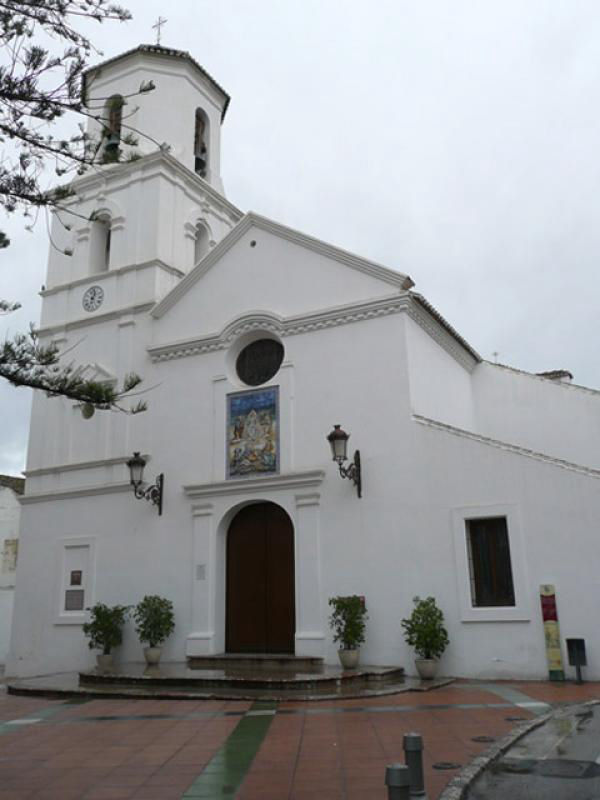
The place we are visiting with the audioguide is one of the few places of worship in the world with depictions of the three archangels, amongst whom Saint Michael is the patron saint of Nerja.
The building displays an academically Baroque style, divided into three naves separated by pillars and half-pointed arcs. The central nave has a Mudejar framework covering (a style dominated by Moorish influenced motifs present in architecture after the Reconquest of Spain from the moors by the Catholic Kings) whilst its sides contain vaults with groins and half-seams in the foremost parts. The transept, which overhangs the naves on either side, is touched off with a hemispherical dome with characteristic structural ribbing.
The bell tower is made up of three cubic bodies culminating in an octagonal detail. An interesting architectural feature is the design of the font for the holy water, situated beneath the choir and designed in such a way that its central axis is shared with that of the church's central column.
6- The Europe Fountain
The Fountain dedicated to Europe is intended as a lasting symbol of and an inspiration towards, the strong commitment to Europe by the town of Nerja, the town of the Balcony of Europe, and the moment that Spain was incorporated into the old European Economic Community, today the European Union.
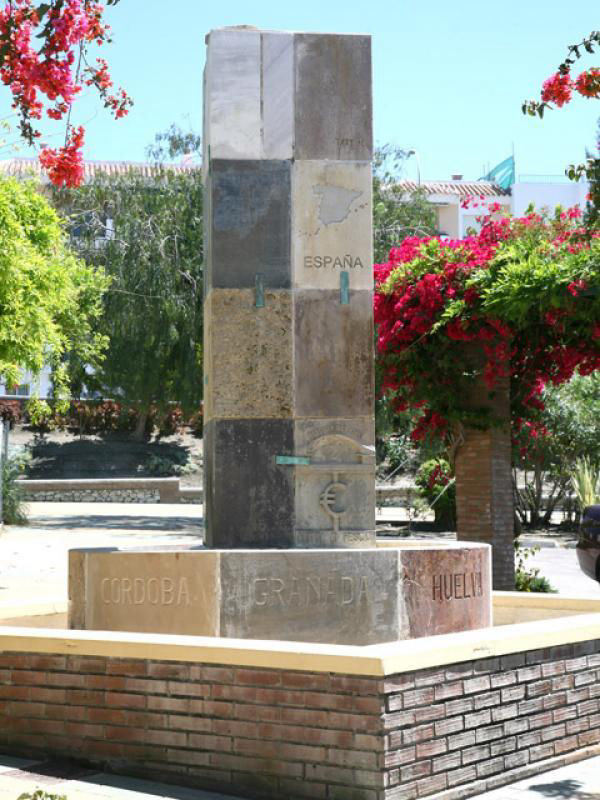
Construction of the said monument gained unanimous approval at a meeting of Nerja's consistory, along with that of the European Commision in Brussels, and of the European Parliament in Strasbourg, not to mention the support of all the EU member states, communicated through their respective embassies and under the Spanish patronage of the EU Commision in Madrid. At the same time, all of the andalucian provinces are represented in the fountain, forming part of the main central basin of the fountain.
The grand monument to Europe is formed of sixteen stone blocks, fifteen of which have been sent from each one of the 15 member states (as they were then) of the EU, presented as gifts to the project and one stone from Nerja which is used as a column, symbolizing the unity of the nations that contributed to western culture, and looking forward to a peaceful future, leaving aside centuries of misunderstanding, for the good of their citizens. A Europe united, that aims to make its mark on the world with its aims of true liberty and democracy, where the people shall be the true sovereign entity in taking decisions and determining its future. The audioguide continues in the next stop.
7- Cantarero´s Fountain
This fountain was constructed at the beginning of the 20th century, a project promoted by Francisco Cantarero who was at the time the mayor of Nerja, and coinciding with the first supply of drinking water to be installed in the old centre.
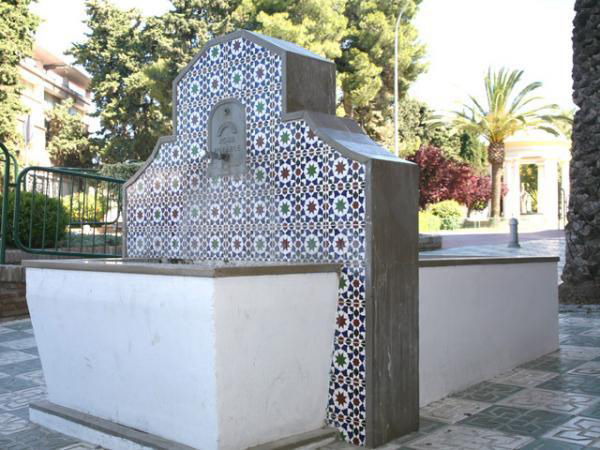
Francisco Cantarero also constructed, in the area surrounding this fountain, the honey factory known as “El Progreso”. The fountain has changed not only its location but also its appearance various times over the years.
8- Maro
Maro is a beautiful, white village situated on the cliff tops overlooking the Bay of Nerja, between La Caleta and the Barranco de Maro; and between the Balcony of Europe and Cerro-Gordo.
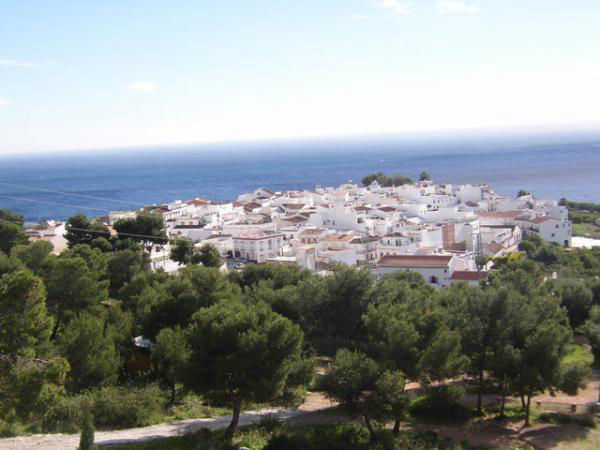
Historians nowadays site the current town as lying upon the Detunta Romana, between the ancient roman towns of Sexi (now Almuñécar) and Claviclum (present day Torrox), next to the roman road of Cástulo on the route to Malaga via Orgi. In those days it was a small hamlet or factory dedicated to trade.
During the period of Muslim rule, existed a small rural dwelling dedicated to agriculture and industry related to silk and the production of honey from sugarcane.
On the nearby flats, Sanguino, the best tropical fruits to be found in the local area are grown and according to research, even if lacking in historical rigour, they derive their name from a small battle which took place here during the reign of Felipe the Second, between Hernando el Darra and Captain Antonio de Luna. This event took place in 1570 and is assumed to have taken place near the stream of this name, the natural mouth of the Sierra Almijara in the direction of the cove of Maro.
Towards the middle of the 17th century Maro was dominion, and its most notable Lord was D. Lucas Navio de la Peña.
Another interesting fact that the audioguide reveals, passed town to us by word of mouth, tells of the visit of Cardinal Cisneros to the area, who is said to have passed the night in a fortified tower which existed on the present day site of the “Casa Grande” Maro experienced on the most profitable periods during the first third of the 19th century, exporting as it did the early flowering fruits. Today, without leaving behind its agricultural roots, Maro is beginning to open up to tourism.
9- The Church Of Our Lady of Wonders
La Iglesia de Nuestra Señora de las Maravillas, or The Church Of Our Lady of Wonders is documented to have been finished at the end of the 17th century although its architectural features suggest that it could have been based on the reuse of a previous structure or perhaps that it was finally concluded centuries after it was designed.
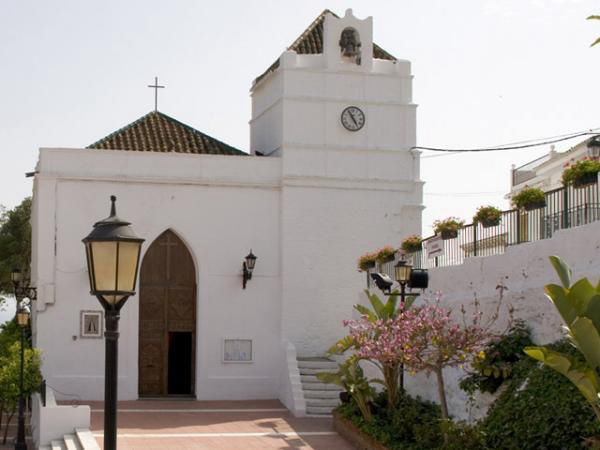
The church was restored in 1887 and is constructed around a single nave with double beading. Its door, windows and internal arches are formed by the joining at an angle of two arches. Its tower is crowned with pyramid shaped capitals and has incorporated into is front face a small belfry. From the outside, the tower appears to be solid and to be made up of various components slotted together in a step like manner although in reality it has only two floors, the internal structures of which are hollow with vertical wall, with the lower floor being incorporated into the church in the form of a small cubical room, which one accesses by means of a pointed arch.
The second floor, from within whose interior you can make out the lines of the stone and brick work, also contains an arc used for access in a similar manner to the aforementioned one in the lower floor and directly above it, although nowadays it is permanently sealed.
It is likely that this entity was once divided in two wooden floors which have long since disappeared, a theory suggested to us by the holes left in the wall by this supposed structure. The tower contained a door that led on to the street, facing towards the north and currently semi-hidden by a small stairway. In the interior of the church constructed in the Eclectic style believers venerate the image of Our Lady of Wonders, Patron of Maro, as you can see with the audioguide.
10- The Cliffs of Maro
The cliffs of Maro-Cerro Gordo rise up where the Sierra Almijar “dips its feet” into the Mediterraneo.
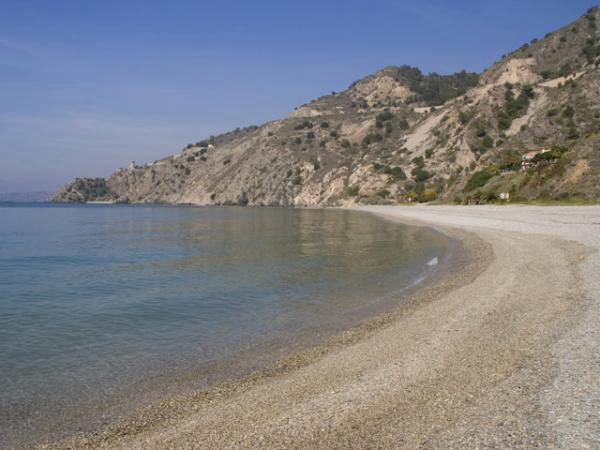
They constitute a privileged enclave of outstanding beauty for which they have been deemed worthy of being declared a Natural Beauty Spot by the A.M.A. Since 1989. The site occupies an area of 375 hectares, including a distance of 1km from the shoreline out towards the open sea. The area can be walked with the audioguide taking as a starting point the national road N-340.
The coves of the area are named and include Cala Barranco de Maro, Playa de la Caleta, Playa de Maro, Torre de Maro, Playa Molino de Papel and Playa el Cañuelo, the last of these offers Jeeps to hire during summer as a means of descending towards its beach.
11- The aqueduct of Aguila
The aqueduct of Águila was built at the end of the 19th century “in the style of the roman aqueducts” and was intended for irrigation and to carry water to the old sugar factory known as “Las Mercedes” or “San Joaquín”. The construction of this feature, as with the Cantarero Fountain, was thanks to the local craftsman D. Francisco Cantarero Senior, whose signature can still be seen, conserved next to the central shrine.
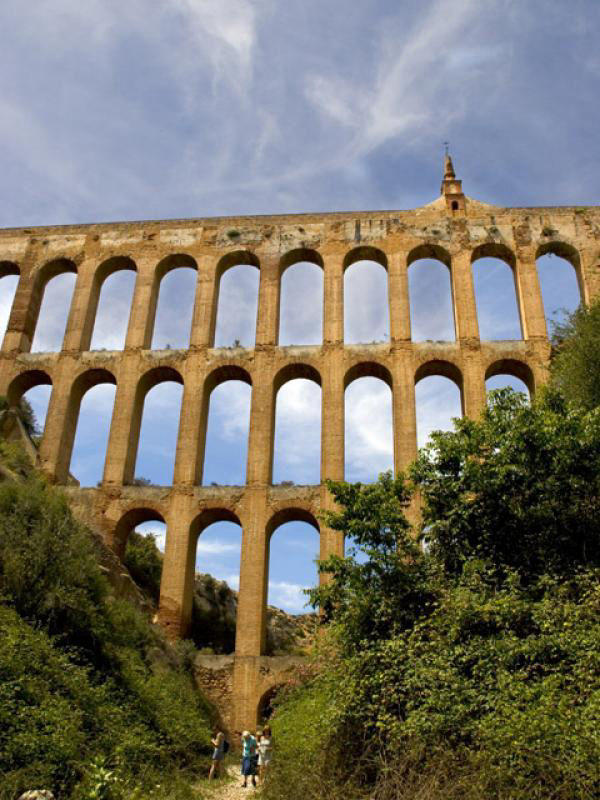
At the front of the aqueduct, on the interior facing side looking towards the north and the old route, there is a gallery of filled-in arches with a horseshoe shape reminiscent of the Mudejar style. Rising up from the central part are four levels of brick-built arches making up in total 37 half-pointed arches and a small shrine, where if you look carefully you can just about read the inscription “Pure and immaculate conception”, crowned with a small wind vane in which is formed the shape of a two-headed eagle, the eagle which lends its name to the building.
The aqueduct remains in use and can be found with the audioguide on the old national highway N-340, approximately 400 m. before arriving at Maro when travelling from Nerja.
12- Europe´s Kidnapping
El Rapto de Europa or Europe's Kidnapping is the monument raised by the people of Nerja on the 26th January 1986, on the occasion of Spain's entry into the European Economic Community (now EU).
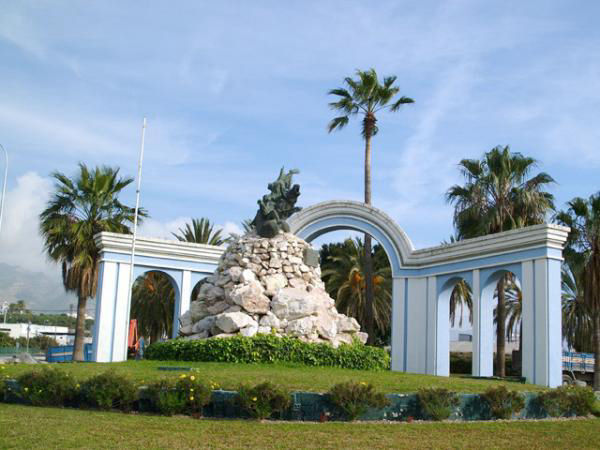
Guests at the inauguration act included representatives from the embassies of the C.E.E. in Madrid. The flag of the C.E.E. was raised by the journalist Ricardo Utrilla Carlón, who at that time was the president of the news agency EFE, by express invitation of the mayor, Antonio Villasclaras Rosas.
The author of the sculpture we can admire with the audioguide is the andalucian artist Aurelio Teno Teno. It is a very peculiar work, fitting into the figurative expressionist style associated with this sculptor, which represents a bull (Zeus) which instead of kidnapping Europe (represented by an Andalucian woman in a fighting stance, actually saves her, in this way representing the view of the sculptor of the situation at that time.
It stands at the entrance to the western side of the historic centre, representing democratic Spain and its links with Europe and a free world.
13- The Torrecilla
Next suggested place to visit with the audioguide, the location of “La Torrecilla” suggests that its first use was related to the line of coastal surveillance designed by the Narzaries, Muslim descendents of Yusuf ben Názar, the founder of a ruling dynasty in Granada, during the 13th century. However, the remains of the tower found today correspond to a later building, constructed in the 18th century to ward off Berberisco pirate invaders.
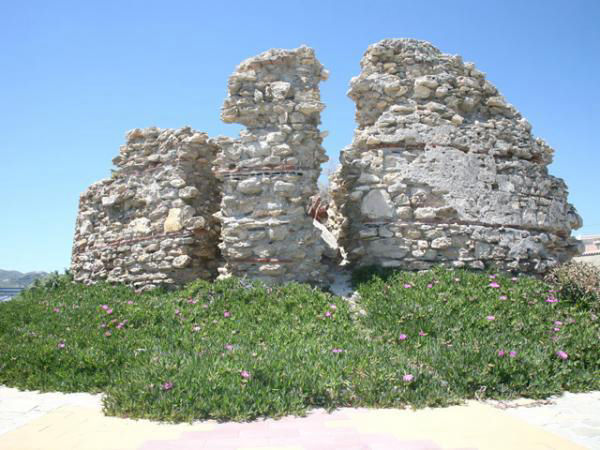
The tower itself is a dry-stone wall, fortified tower, realised through a combination of stone masonry combined with brick. It had a semicircular floor with a recessed retreat and a shortened conical section. Its original height would have been 11m with a maximum width of 15m. The aspect that the tower presented at the beginning of the 19th century is known thanks to original drawings that persist from the time of a project carried out to consolidate the structure's foundations, carried out under the direction of D. Nicolás Garrido in 1807. The project involved filling in the open with a supportive substrate and a securing of the exterior masonry is proposed to avoid the building degenerating into ruins. During the War of Independence the tower was blown up by the English, at that time allies of the Spanish, in order to avoid it being used by the invading French army.
14- Torrecilla Beach
The beach known as “La Torrecilla” takes its name from the nearby small tower, the old watchtower, which is found on the western side of the beach. So far every year it has been honoured with the Blue Flag award of the European Union and the “Q” mark indicating that it conforms to certain quality levels defined for tourist beaches.
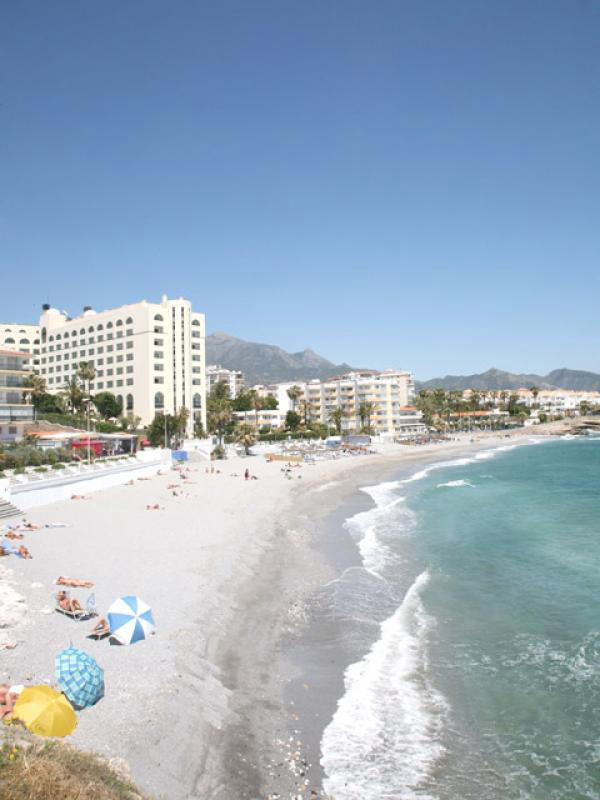
15- Burriana Beach
The beach at Burriana is the most famous beach of all of the coast of Nerja, thanks both to its amazing views at the beginning of the cliffas and for setting the scene for the famous television series “Verano Azul”.
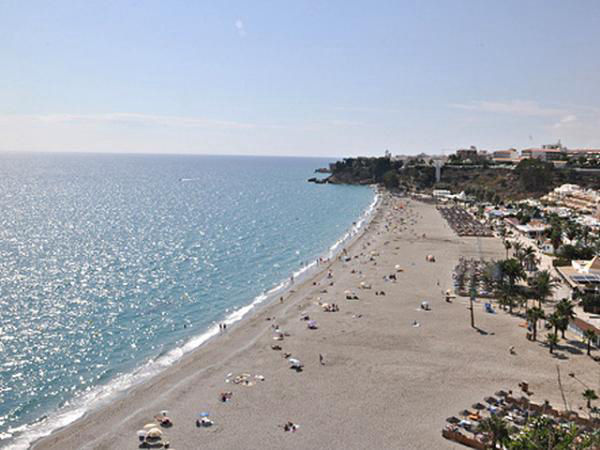
On this beach we can enjoy a pleasing walk with the audioguide along its extensive seafront where we can find beach bars where it is possible to try and enjoy our famous “espetos”, food cooked on a spit.
In 2004 Burriana Beach was one of the two andalucian beaches distinguished with the award of a “Q” award quality standard for tourist beaches, an award which it maintains to this day. As well as this it is awarded every year the EU award for beach cleanliness, as indicated by the Blue Flag award.
16- Maro's sugar refinery
The story of the Maro's sugar refinery begins in 1582, when it was licensed by Felipe de Armengol, lawyer to the court of Granada, bought from Juan de Gricio Herrera, the Lord of Maro, and decided to grow sugarcane, and so starting the first sugar refinery in the area, the construction of which was begun in 1585, opening at the same time a route from Maro to Granada, via the “Sierra de Almijara”.
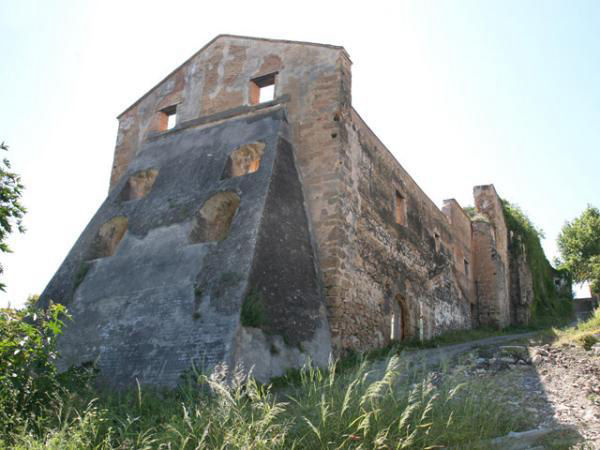
This refinery continued operating until a fire in the 1870's paralysed its work, at which point in time the refinary was now the property of the Pérez del Pulgar family. Despite undergoing various redesigns and now finding itself in a state of dilapidation, the building still conserves some of the original, strongly built building, realised by famed ashlars working with Travertino stone which constructed solid walls, spans and half-pointed arches, all perfectly finished, and similarly a powerful buttress or “friend's foot” which points towards the gully.
17- The San Antonio Abad Refinery
Finally, the audioguide leads us to the refinery of “San Antonio Abad”, which was the first sugar refinery built in Nerja and around 1595 there is evidence that it worked at full capacity, being owned as it was by Juan de Briones, and continued in use until the 19th century. During this period it had an annexe containing a flour mill known as “Tabalones”. This refinery was bought by the Larios family in 1872.
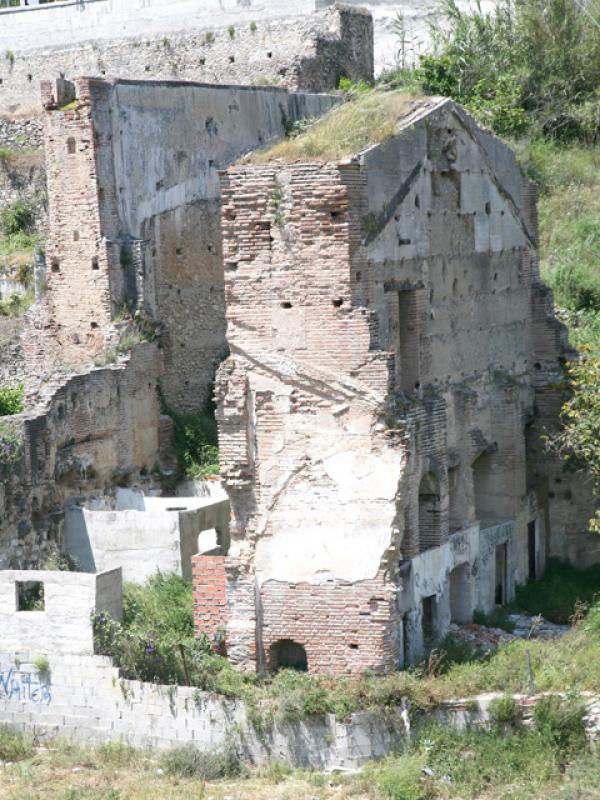
Bluehertz Audio guides has developed for Nerja´s town hall an audio guide service avaliable in Spanish and English languages.
Nerja Tourist Office address: C/ Carmen, 1 29780 Nerja (Málaga).
- Tel.: 95 254 84 00 - turismo@nerja.es - www.nerja.es -
Back to Index